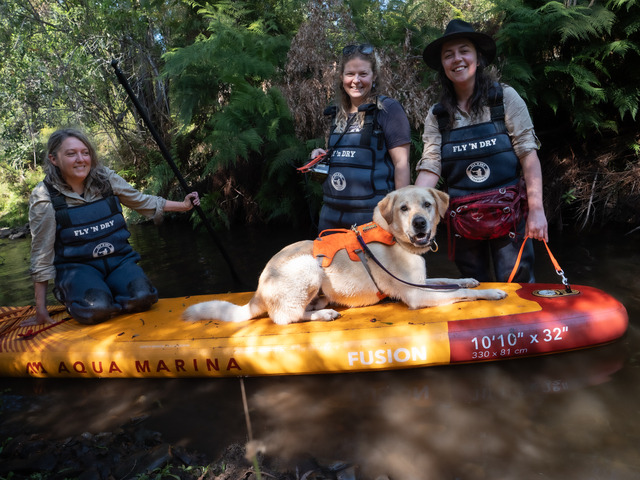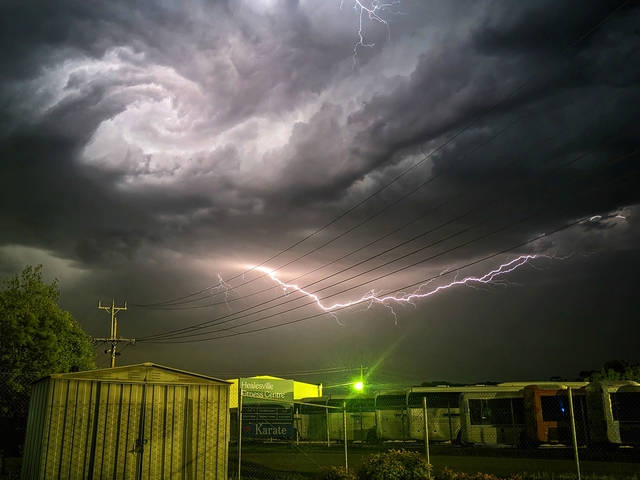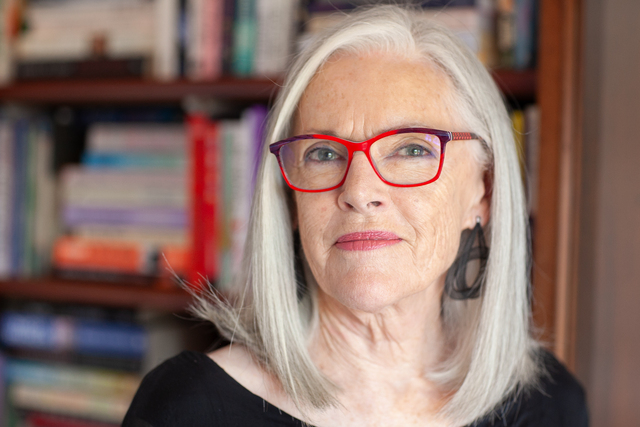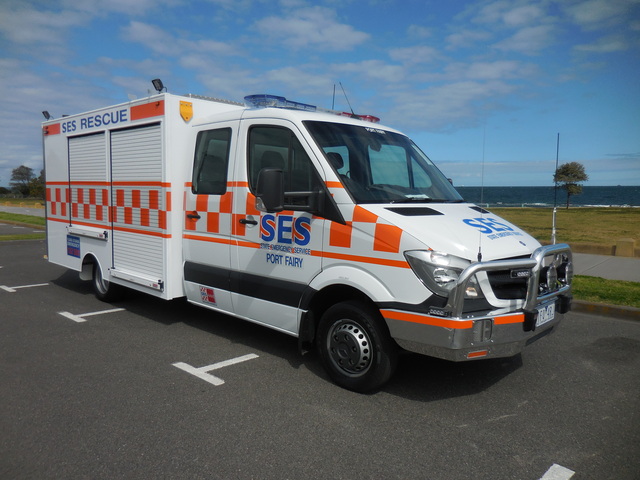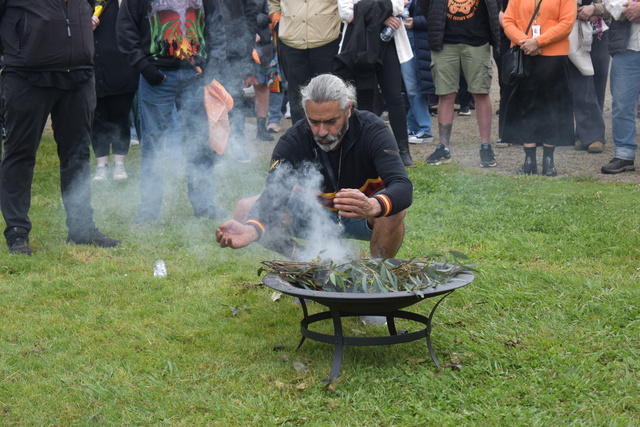When you think sniffer dogs, your mind might go straight to airports – searching for narcotics or to disaster zones – searching for survivors under rubble.
But Zoos Victoria’s Wildlife Detection Dog Squad is using those powerful noses, estimated to be 10,000 to 100,000 times more sensitive than a human’s, to fight extinction.
This mutt-ley crew of five dogs and three humans based at Healesville Sanctuary have spent seasons surveying the sanctuary’s creek systems to monitor platypus populations while the elusive monotreme sleeps in burrows – and now they’re levelling up.
Experienced dogs Kip, the kelpie-cross, and Moss, the labrador, have been taking the lead on Project Platypus Paddle Board.
Taking a cue from detection dogs that sniff out whale scat at sea, the team is now hitting the water on paddle boards to search for platypuses in hard-to-reach habitats.
Wildlife detection dog officer Dr La Toya Jamieson said the paddle boards allow them access to trickier locations, which increases the valuable data they can provide to platypus researchers.
This data provides a fuller picture of how the species is using the waterway informing future conservation decisions.
“It has allowed our teams greater flexibility in the locations we survey with the dogs and reduced the risk of the dogs encountering snakes sunning themselves on the creek banks,” Dr Jamieson said.
This new non-invasive survey technique is also fun and games with the team amping up their exercise routine.
“Kip and Moss need to use a lot of balance and core strength to search from paddle boards, so it was important that we built up these core muscles on dry land first. Gradually when the dogs were comfortable, we introduced them to working from the water.”
The entire team goes through a ‘Fit to Work’ conditioning program developed by the Penn Vet Working Dog Centre.
“Our communication with the dogs has needed to develop too. Typically, the dogs can search freely and decide where they go. Whereas now their movement is restricted, and they rely on their handlers to move the board through the search area to detect odour. It is paramount that the handlers are learning to closely read the dogs behaviours. Effective communication and the bond between dogs and humans are the cornerstone of success for this survey method.”
Zoos Victoria’s Wildlife Detection Dog Squad was established in 2019 to support field researchers locate cryptic threatened species and their traces such as scat.
The dogs are trained to search steadily and alert to their target at a distance which ensures the animals are not disturbed.
The squad focusses on the relationship between humans and dogs forged over thousands of years, and applies the latest scientific advances in animal training, husbandry and welfare.
They work closely with Zoos Victoria’s 27 local priority threatened species.
The team is grateful to the multiple partners, program contributors and generous philanthropists who make this conversation work possible.

